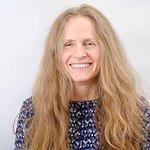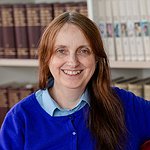Nyang ral's Codification of rNying ma Literature and Ritual
A Study of Tibetan Sources for the Formation of Tibetan Buddhism (10th to 12th Centuries)

The 12th century marked a watershed in the formation of Tibetan religion, from which emerged its forms familiar to us today. There were three major developments:
- a comprehensive reformulation of the earliest Buddhist traditions introduced from India three centuries previously by the Tibetan Emperors
- a comprehensive recreation of the indigenous non-Buddhist Bon religion
- the creation of new Buddhist traditions based on further translations from India.
All three developments were historically significant, and can be seen as different aspects of the same regenerative process, as Tibet emerged from the long chaos following the collapse of its Empire. The principal actors of each development were often closely related, with some individuals contributing significantly to more than one.
This project focuses on the first, the comprehensive reformulation of Tibet's earliest Buddhist tradition, introduced from India in the 8th and 9th centuries. Known as Nyingma (rNying ma), its special characteristics included a commitment to adapting Indian tantrism to Tibetan narratives and culture, and an open scriptural canon, to which new additions were repeatedly made through revelation and inspired rediscovery. Among the most notable legacies of Nyingma to the rest of Tibetan Buddhism were its system of hereditary religious authority, still widespread across Tibetan Buddhism, and its major deity Dorje Phurpa (rdo rje phur pa), still practised by most other traditions.
What made the 12th century reformulation of Nyingma so unique was its dependence on the activities of one extraordinary person: Nyang ral Nyi ma'i 'od zer (1124-1192). In his 13 volume magnum opus Kagye Deshek Dupa (bKa' brgyad bde gshegs 'dus pa), he codified Nyingma tantrism in a template still followed today. In addition, he wrote history and hagiography, cementing the Nyingma narrative traditions.
Only after him and his Kabje Deshek Dupa can one talk of a full-fledged Nyingma tradition. Although utterly seminal, Kagye Deshek Dupa remains unstudied by modern scholarship. the project intends to begin to remedy the situation. The collection is too big for a single project, so we will focus on one section: its 250 pages on Dorje Phurpa, the major Nyingma deity. This choice is also guided by the previous study of project researchers Cantwell and Mayer, which having published three monographs on the topic. Most importantly, they recently discovered amongst archaeologically recovered 10th century texts from Dunhuang, the undoubted source material from which Nyang ral constructed a key section of his Dorje Phurpa codification.
In brief, the project's objective is to understand, philologically, historically, sociologically, ideologically, and doctrinally, Nyang ral's reconstruction of Dorje Phurpa out of earlier materials, and the repercussions of his legacy for later generations of Tibetans.
Duration
10-2017 - 09-2019
Funded by

Publications
Published:
- Cantwell, Cathy. “Early Teachings on the Four Phurpas in the Light of the Eightfold Buddha Word, Embodying the Sugatas (bka’ brgyad bde gshegs ’dus pa) Revelation of Myang ral Nyi ma ’od zer (1124-1192), and the Relationship between the Revelatory (gter ma) and Transmitted (bka’ ma) Textual Traditions.” Special Issue on New Directions in Gter ma Studies, edited by Jue Liang, Journal of Tibetology 26 (2022): 128-159. Open Access.
- Cantwell, Cathy. “A Short Text on the Four Phurpas Attributed to Padmasambhava, Passed Down Through the Transmitted Teachings (bka' ma).” Special Issue on From Khyung lung to Lhasa, A Festschrift for Dan Martin, edited by Jonathan Silk and Leonard van der Kuijp, Revue d'Etudes Tibétaines 64 (2022): 45-56. Open Access. https://himalaya.socanth.cam.ac.uk/collections/journals/ret/pdf/ret_64_04.pdf
- Mayer, Rob, “Indian nidhi, Tibetan gter ma, Guru Chos dbang, and a Kriyātantra on Treasure Doors: Rethinking Treasure (Part Two).” Special Issue on From Khyung lung to Lhasa, A Festschrift for Dan Martin, edited by Jonathan Silk and Leonard van der Kuijp, Revue d'Etudes Tibétaines 64 (2022): 368-446. Open Access. https://himalaya.socanth.cam.ac.uk/collections/journals/ret/pdf/ret_64_16.pdf
- Cantwell, Cathy. “Myang ral Nyi ma ’od zer (1124–1192): Authority and Authorship in the Coaslescing of the rNying ma Tantric Tradition.” Special Edition on Rethinking Scholastic Communities & Ideologies of Translation, II, edited by Pascale Hugon and Birgit Kellner. Medieval Worlds 12 (2020): 68-79. Open Access. http://www.medievalworlds.net/0xc1aa5576%200x003c0967.pdf
- Esler, Dylan. “The Phurpa Root Tantra of Nyang-rel Nyima Özer’s (1124–1192, Tib. Myang ral Nyi ma ’od zer) Eightfold Buddha Word, Embodying the Sugatas (Tib. bKa’ brgyad bDe gshegs ’dus pa) Corpus: A Thematic Overview and Philological Analysis.” BuddhistRoad Paper 7.1 (2020): 145 pp. Open Access. https://omp.ub.rub.de/index.php/BuddhistRoad/catalog/book/155
- Cantwell, Cathy. “The Action Phurpa (’phrin las phur pa) from the Eightfold Buddha Word, Embodying the Sugatas (bKa’ brgyad bDe gshegs ’dus pa), Revealed by Nyang-rel Nyima Özer (1124–1192, Tib. Myang ral Nyi ma ’Od zer).” BuddhistRoad Paper 7.2 (2020): 137 pp. Open Access. https://omp.ub.rub.de/index.php/BuddhistRoad/catalog/book/156
- Mayer, Rob. “Rethinking Treasure (Part One).” Revue d‘Etudes Tibétaines 52 (2019): 119– 184. Open Access. http://himalaya.socanth.cam.ac.uk/collections/journals/ret/pdf/ret_52_05.pdf
Affiliated Persons




